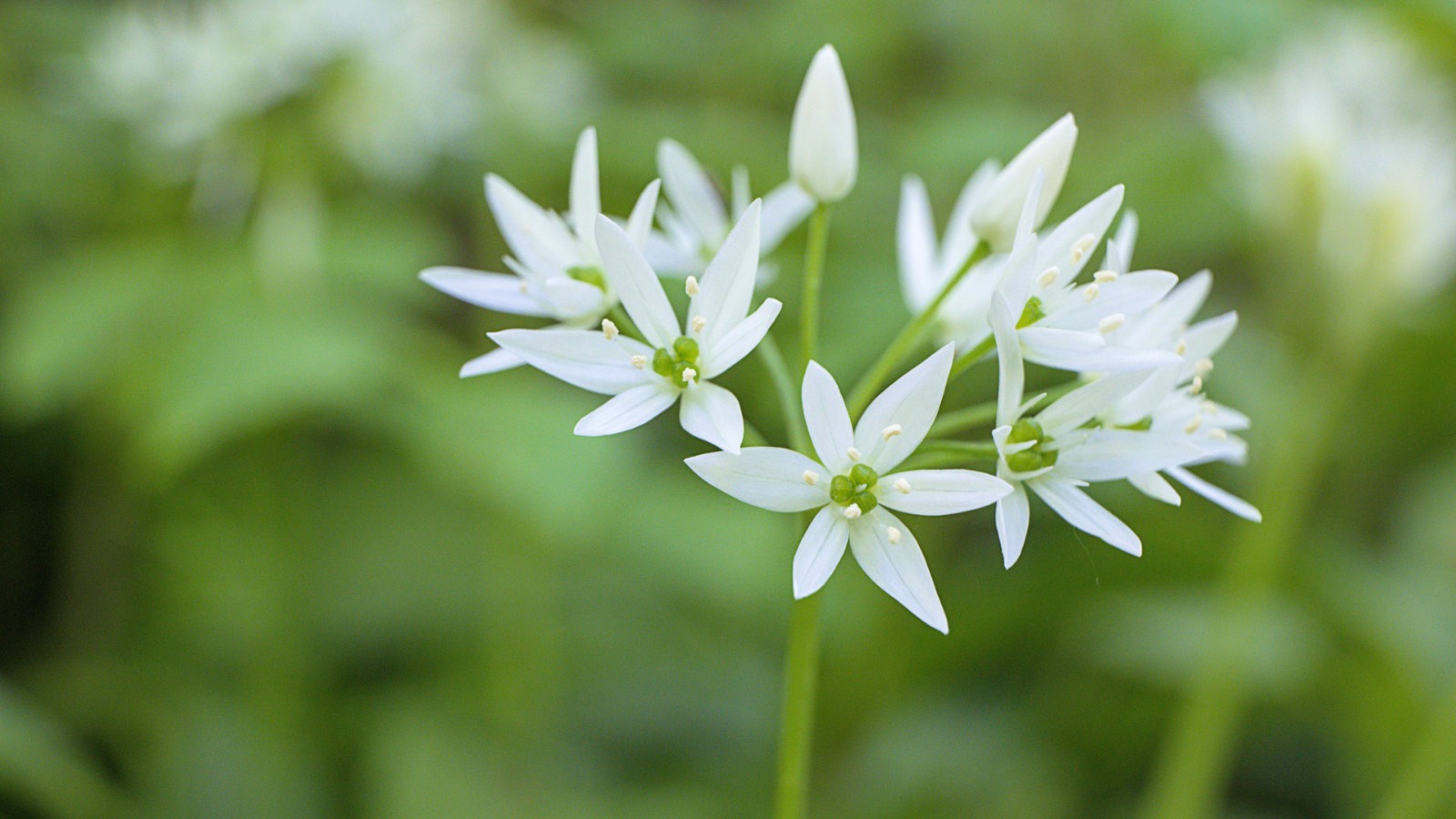If you walk through ancient broadleaf woodland in spring, you may well be over whelmed by the pungent perfume of this smelly woodland wonder! Ramson is also known, quite rightly, as wild garlic and can be a great substitute for onions or garlic in a spring salad. Ramsons (or wild garlic) grow from a small bulb and often spread to form large clumps and as the foliage dies back at the end of the growing season, so does the smell! Often other woodland beauties can be found nestled amongst the ramson’s glossy leaves, such as Bluebells and Red Campion, which can look spectacular in a wildlife garden, hedge or boarder.
Latin name: Allium ursinum
Identification
- Plant Height: 25-45cms
- Leaves: 25-35cms in length. The leaves are long-stalked, glossy dark green and smell strongly of garlic. Their elliptical shape is enhanced by the fact that the stalk is twisted by 180 degrees (the only UK species of woodland plant to do it!)
- Flowers: The flower heads consist of a cluster of 25, small white flowers, in a starry umbrella shape.
- Habitat found: Found in shady, damp woodland, in vast groups, numbering thousands strong. It is a prolific grower and can cover whole woodland floors in the spring
- Flowering time: April to June
- Attracts: Aphids and bees
In the garden
Ramson is predominantly a woodland plant but does well in damp and shady areas of the garden. Once established, the plant can propagate vegetatively to cover a significant portion of the garden, providing a dark green carpet and an explosion of cover and smell in late spring, so keep an eye on it, as it can quickly dominate and area of habitat. Ramson does particularly well in acidic soil and can be found in hedgerows, scrubby areas and shady banks, and as it is so deliciously edible, try incorporating it to a shady area of your herb garden, for a yummy addition to your dinner table!
Did you know?
This appetising herb has other names including buckrams, wood garlic and bear garlic, and as it turns out, its not just us who like to eat it! Bears and wild boar have a penchant for this aromatic individual and actively gorge themselves on it during the spring.
